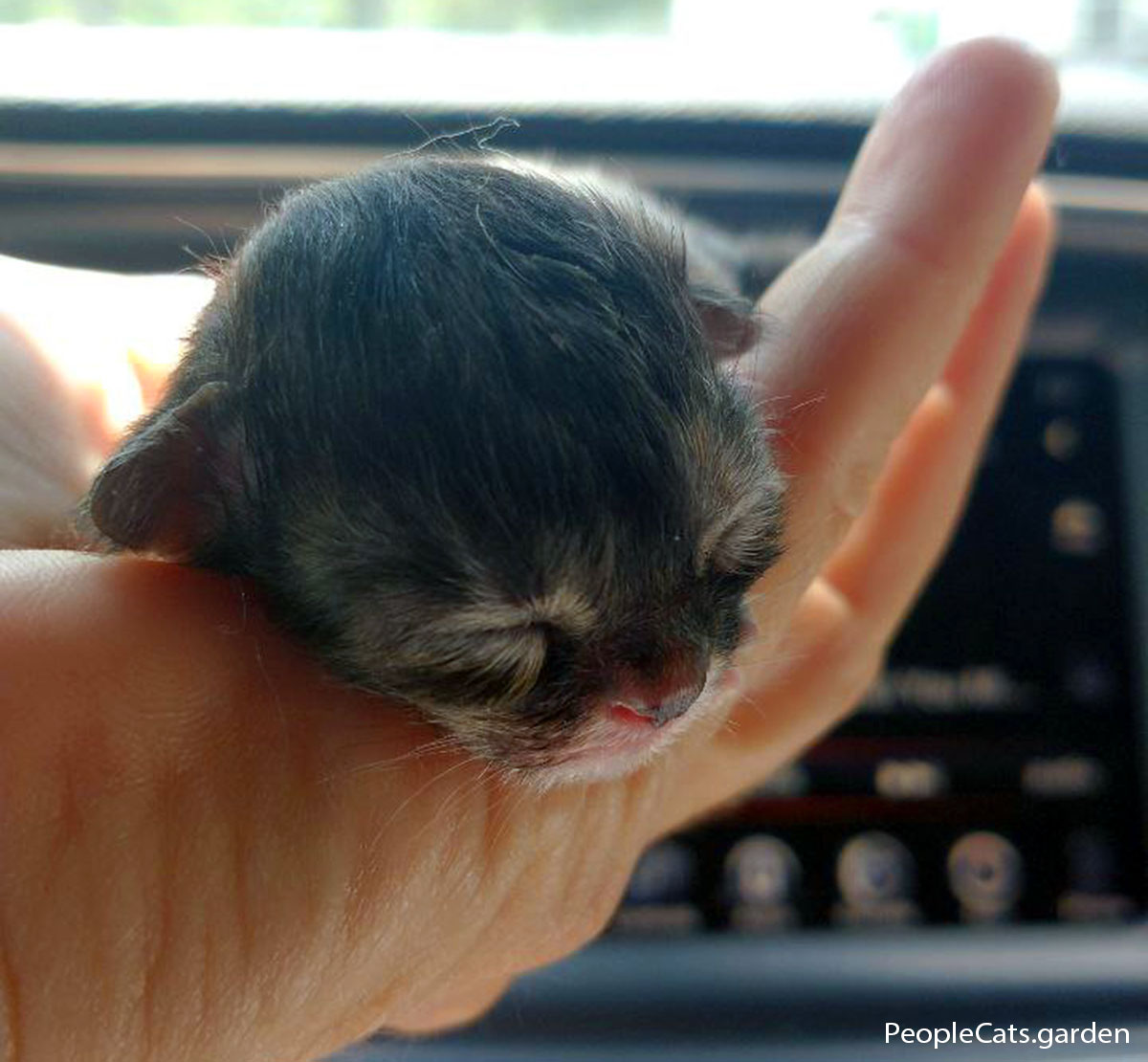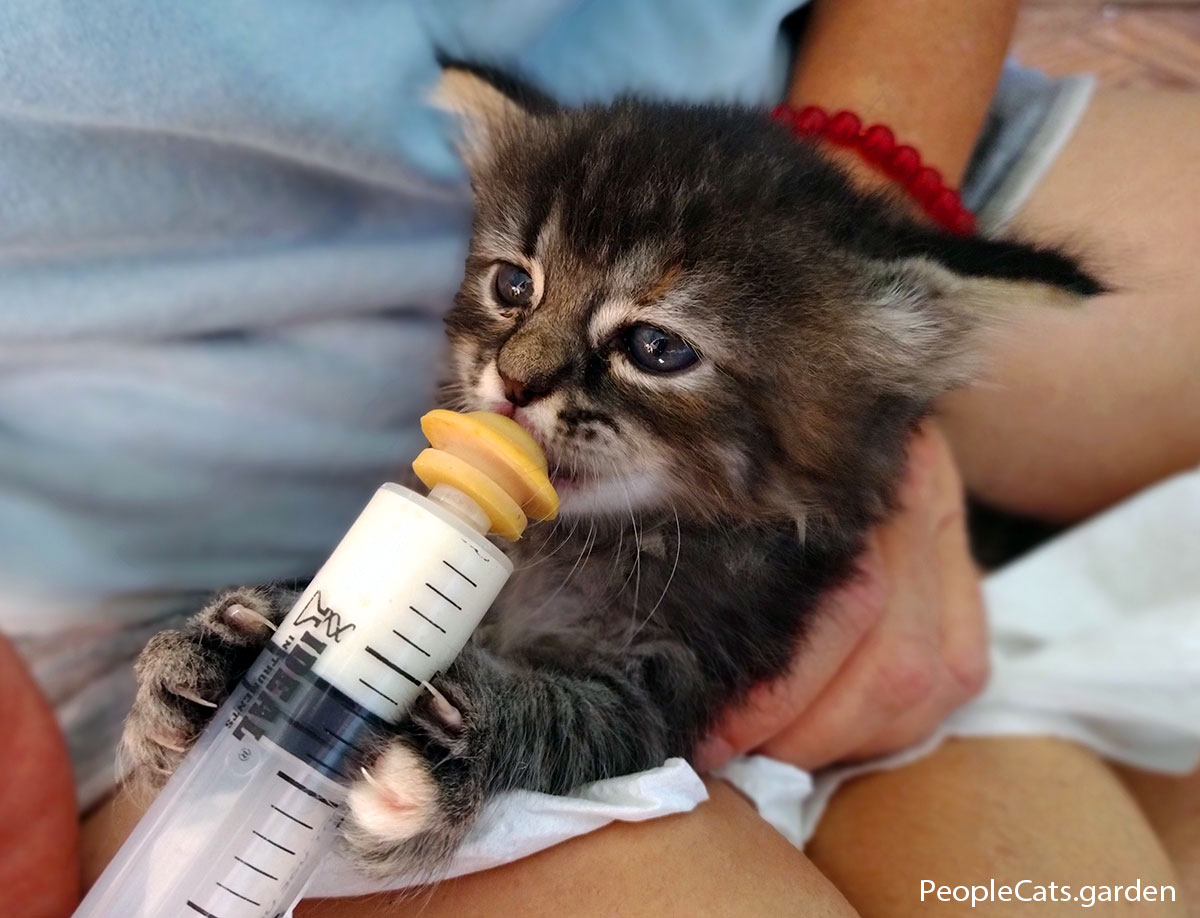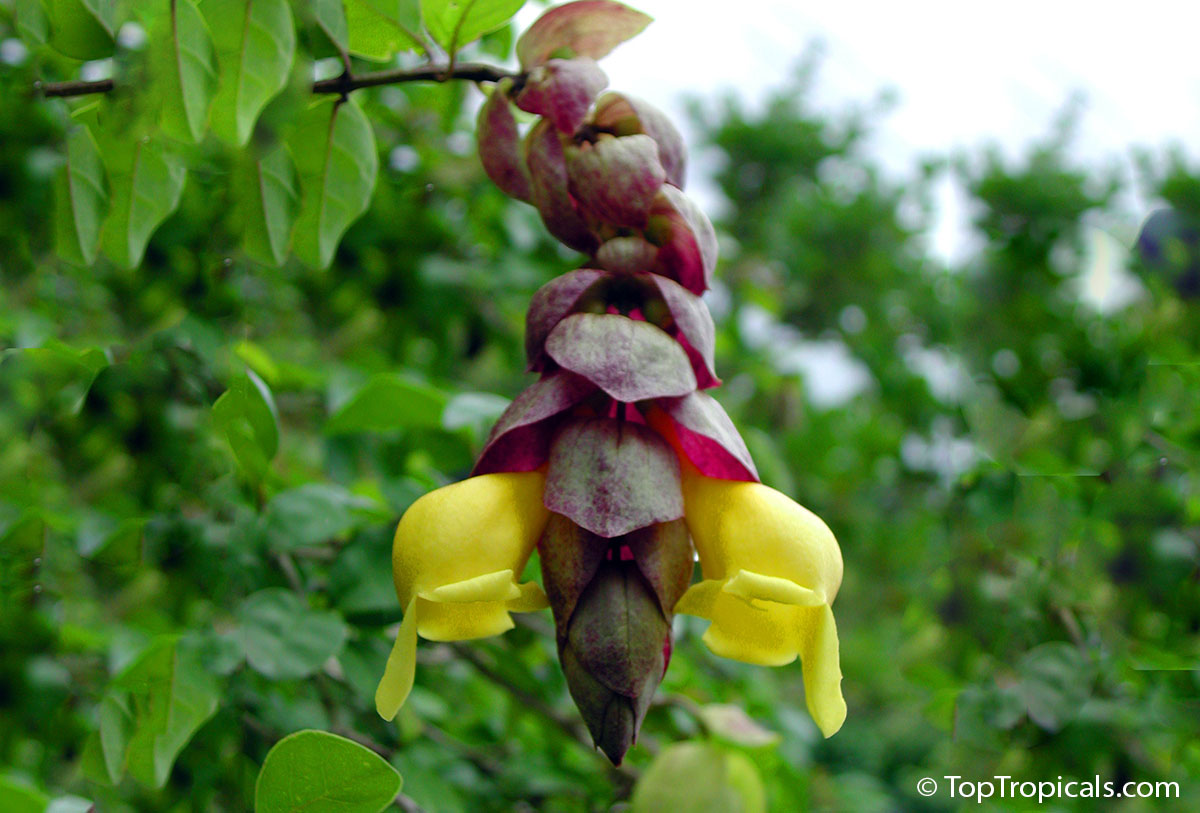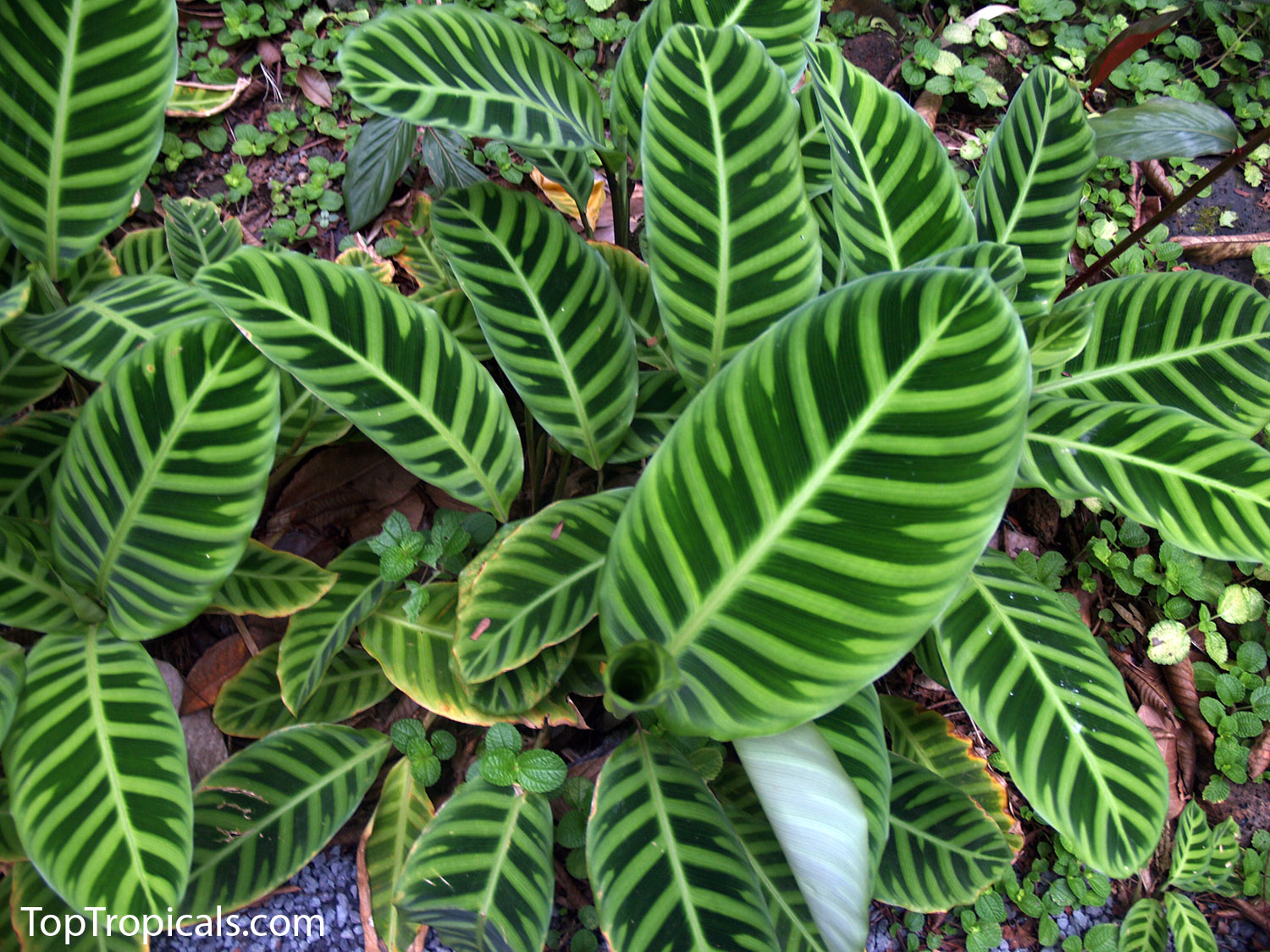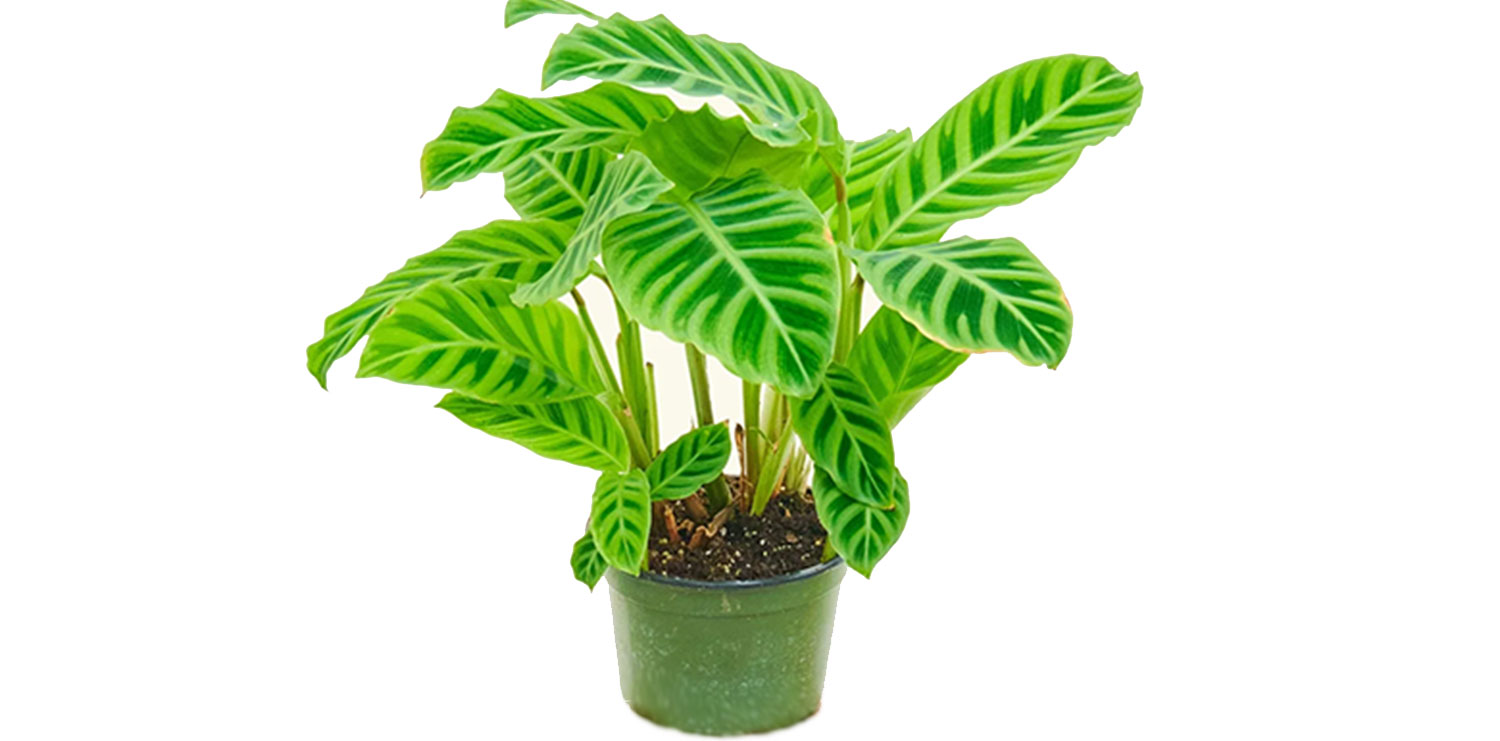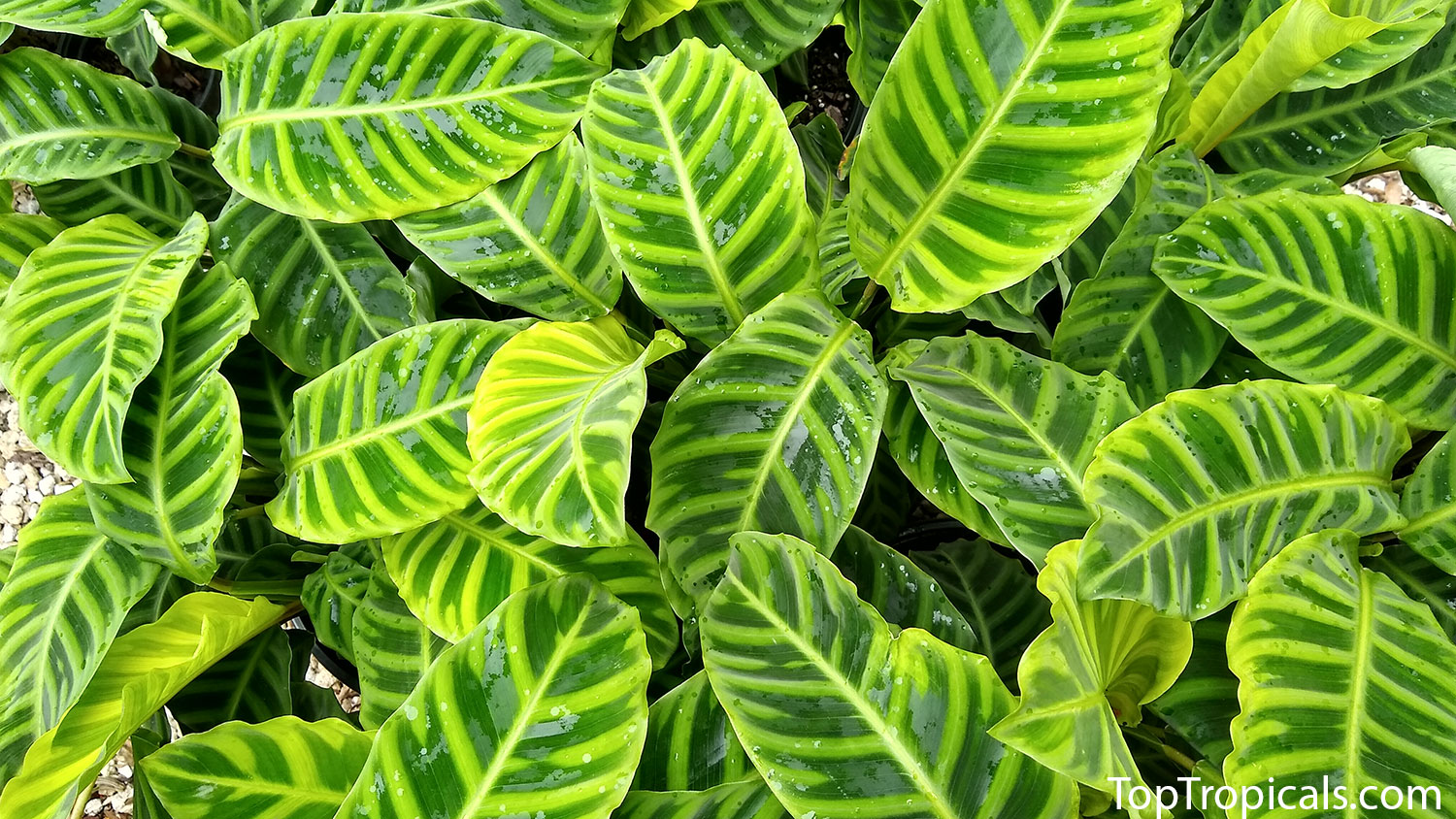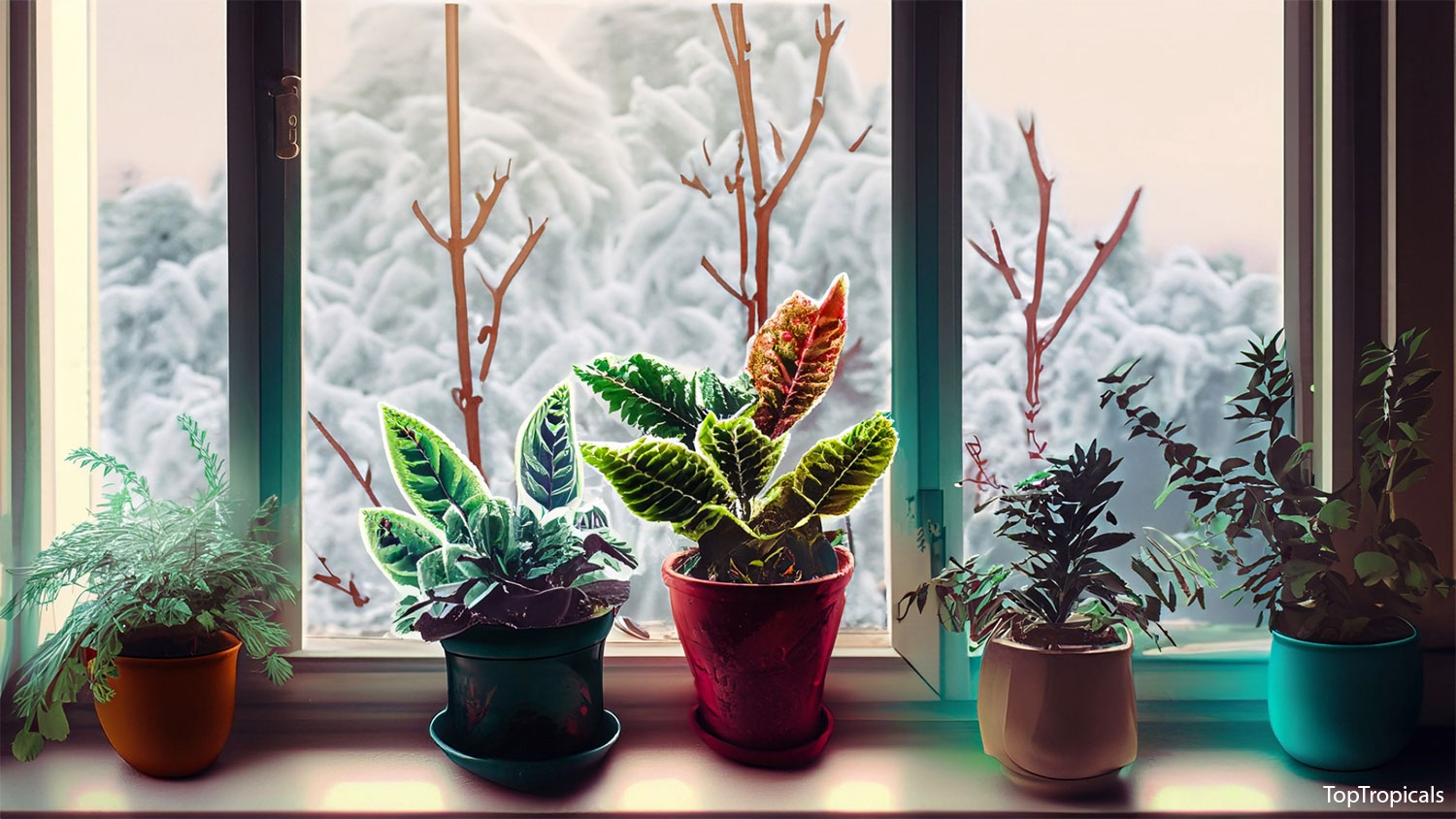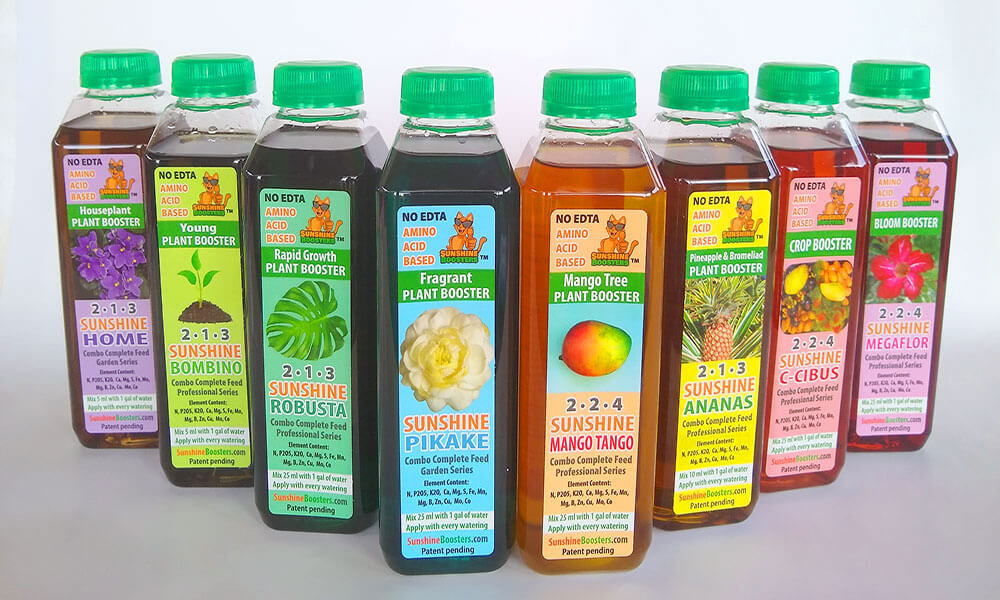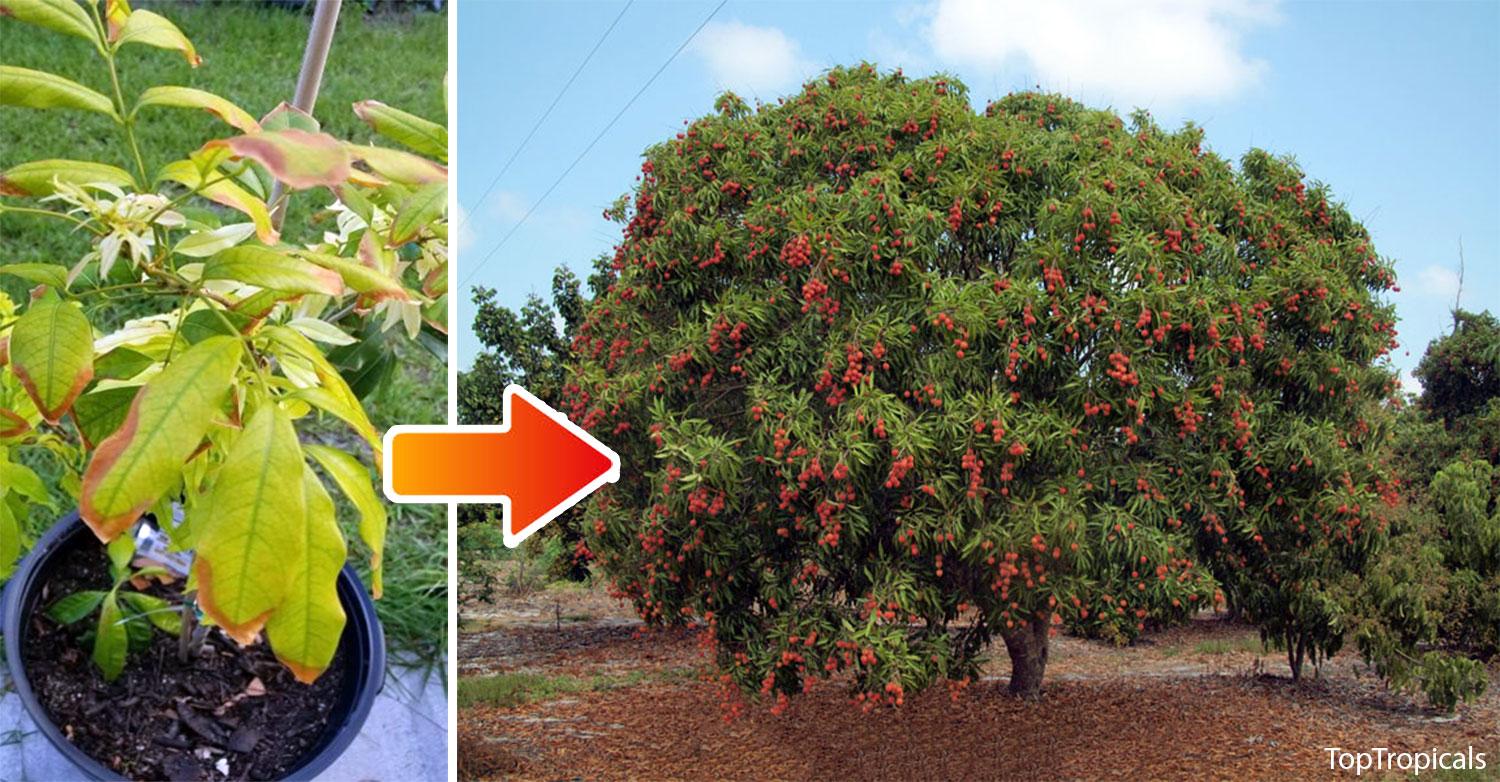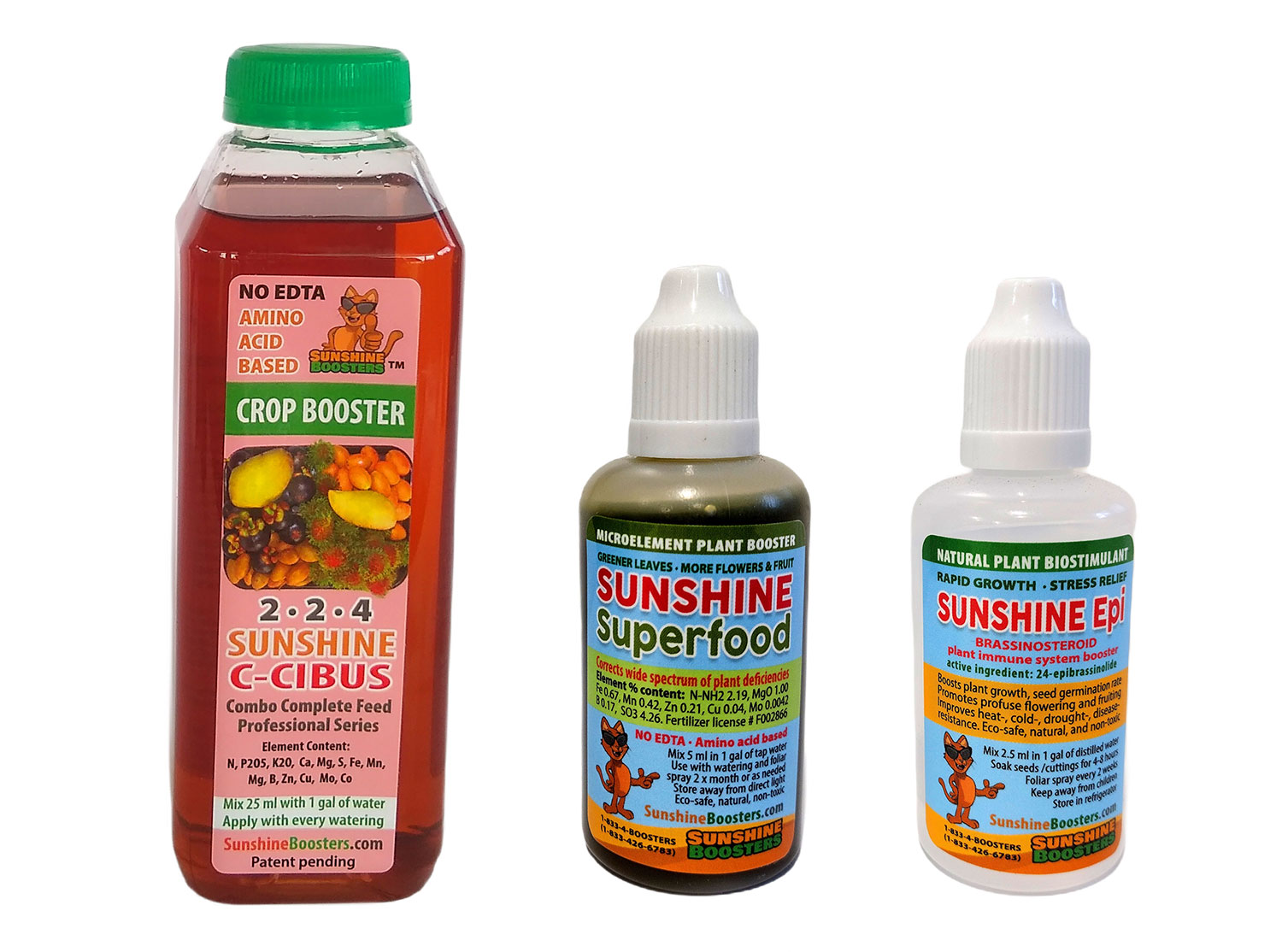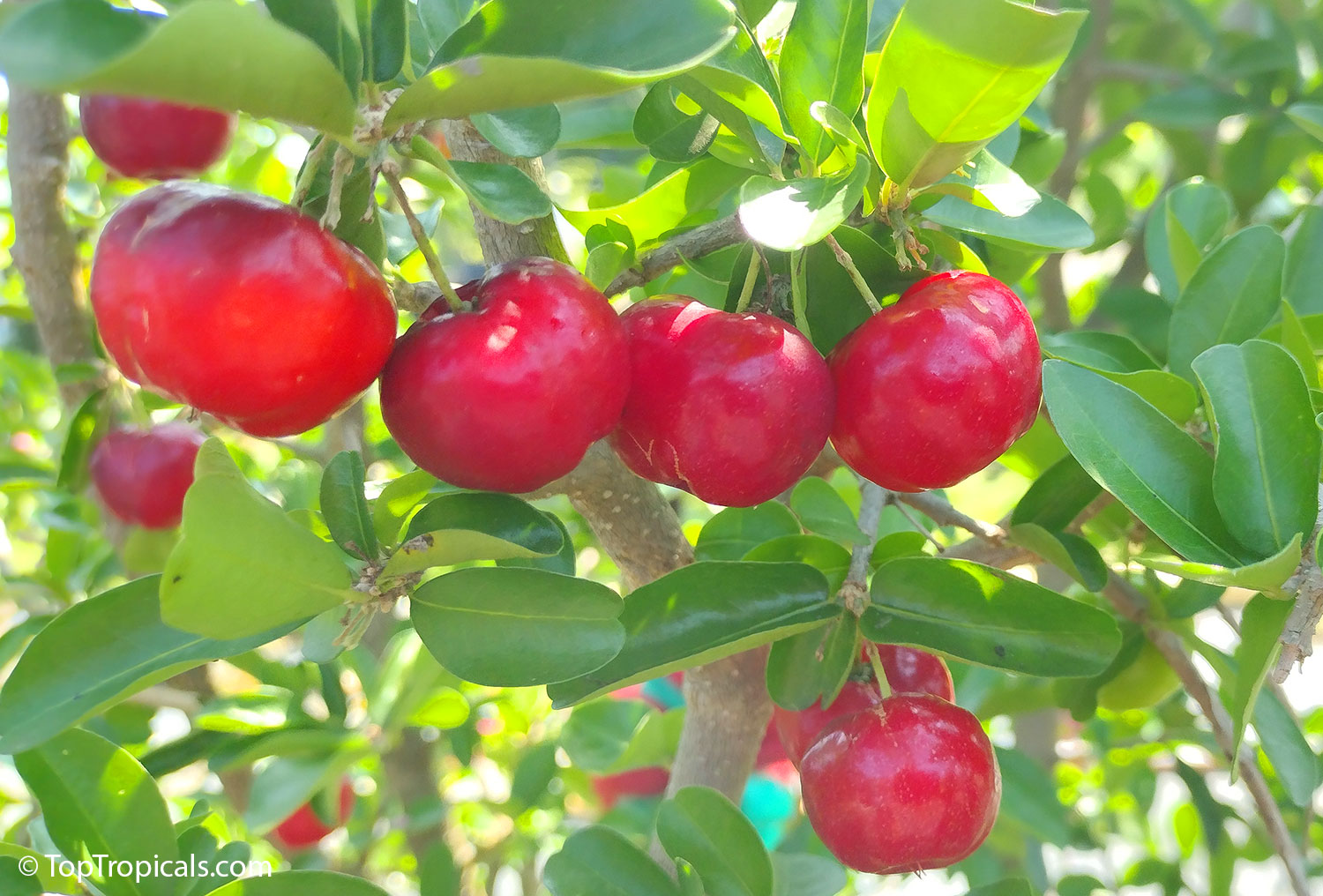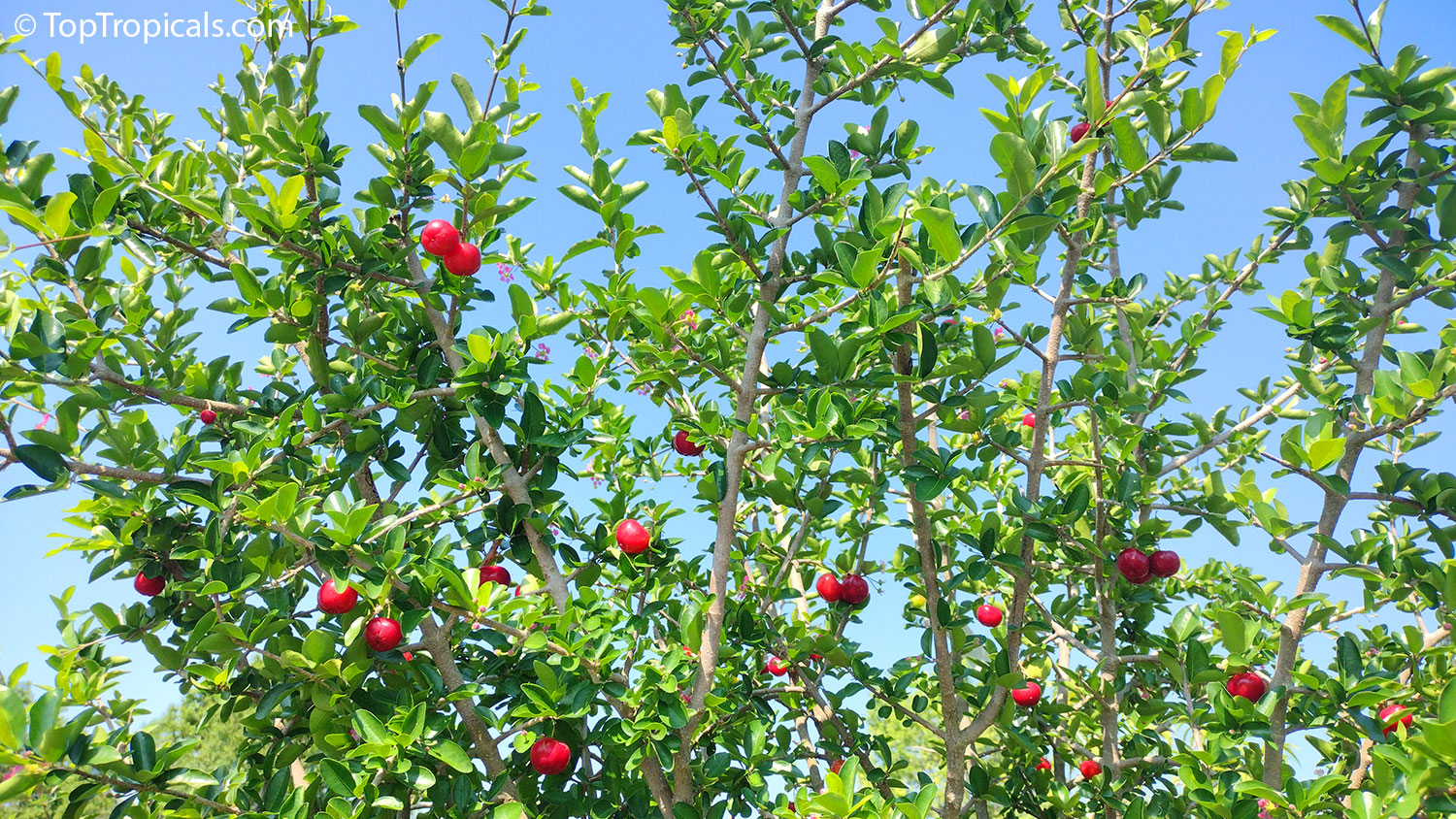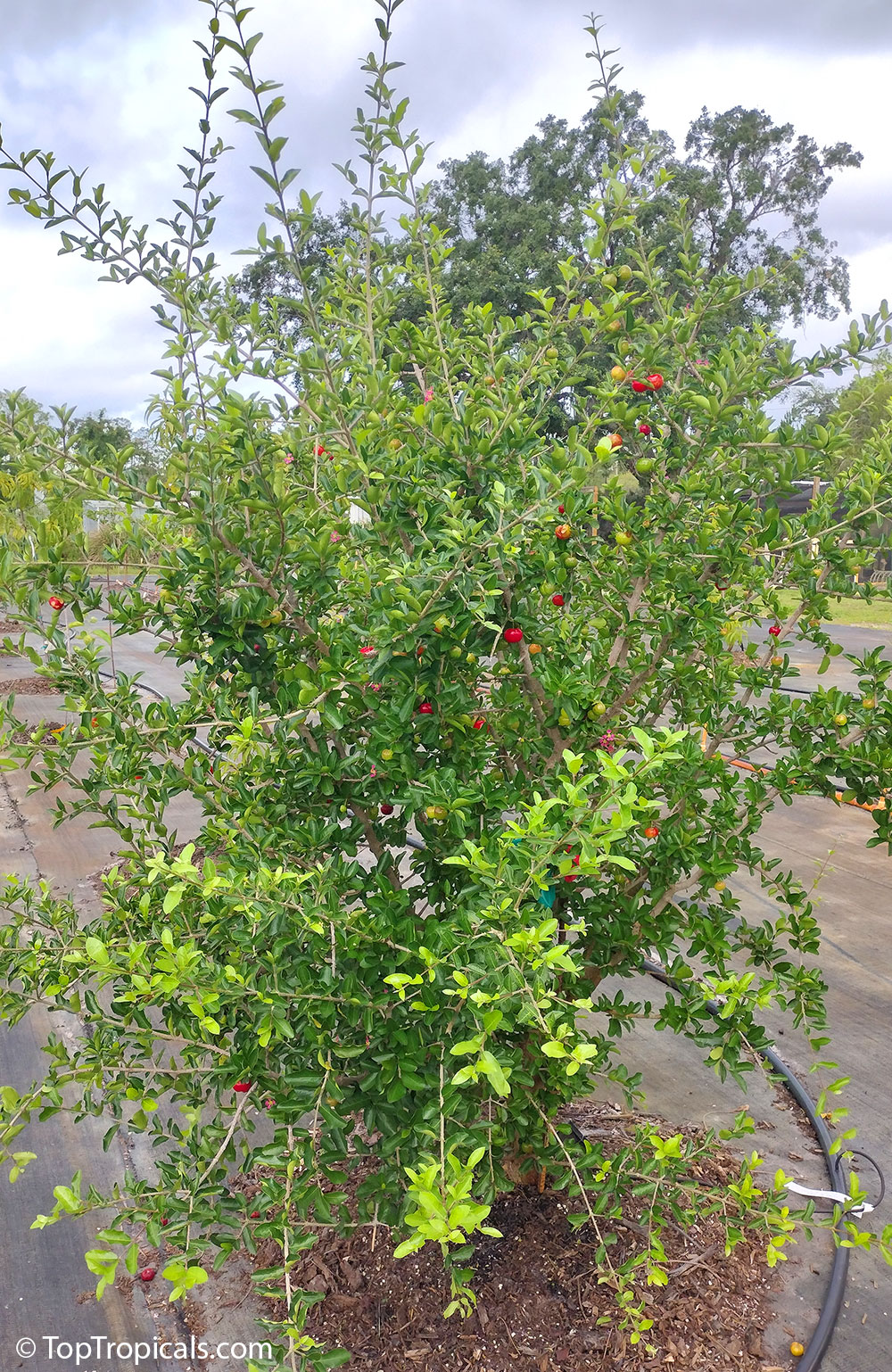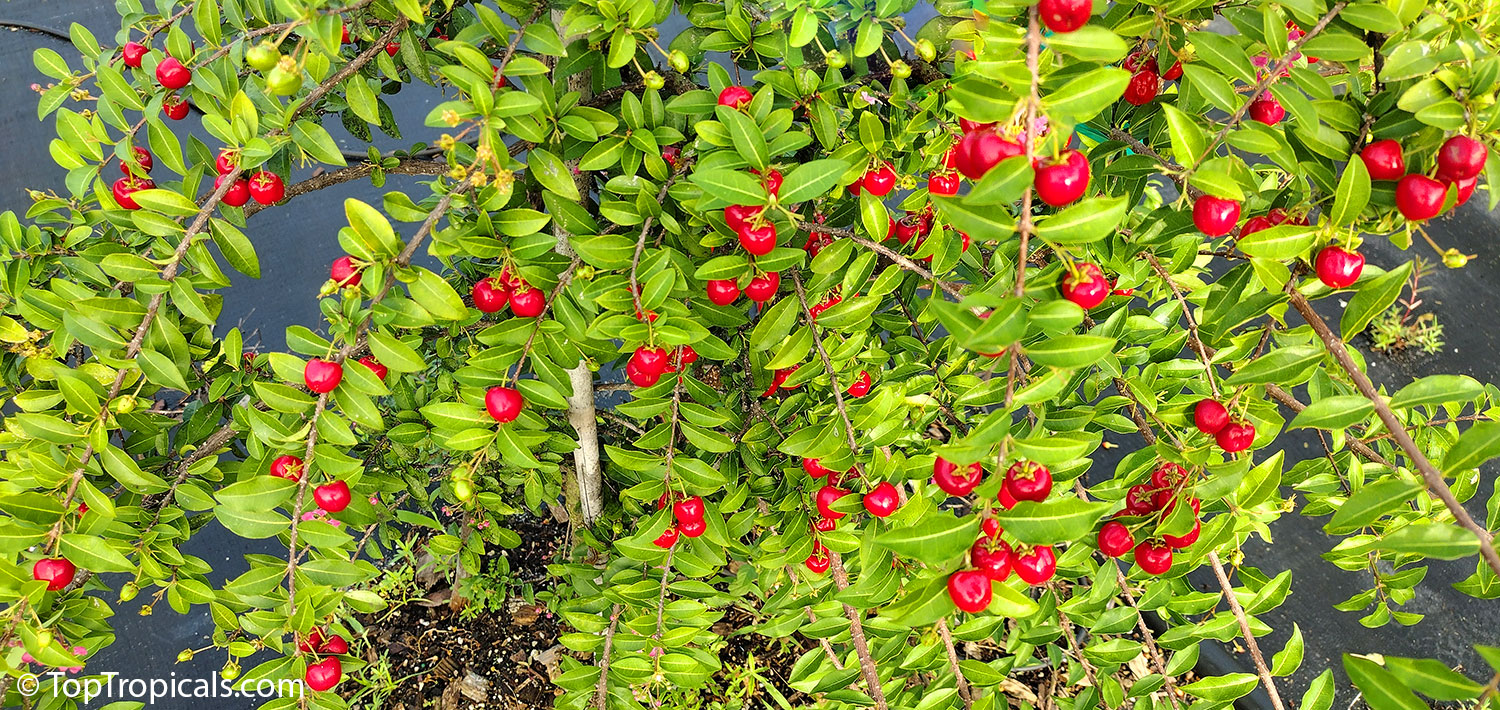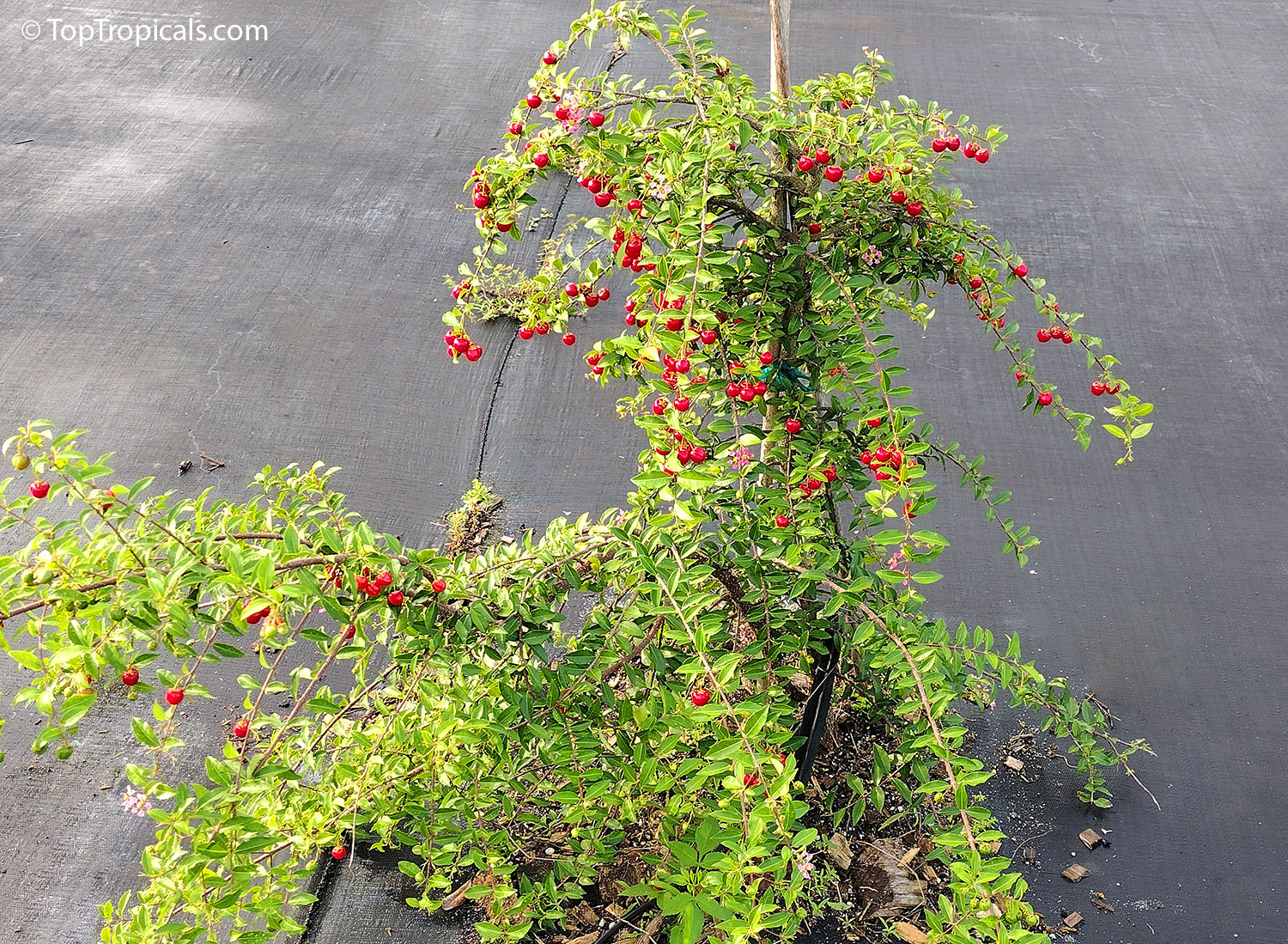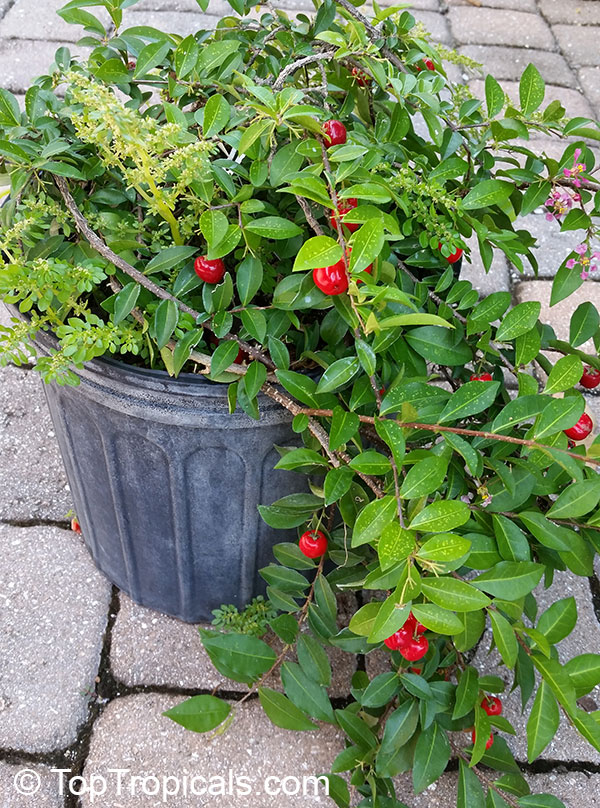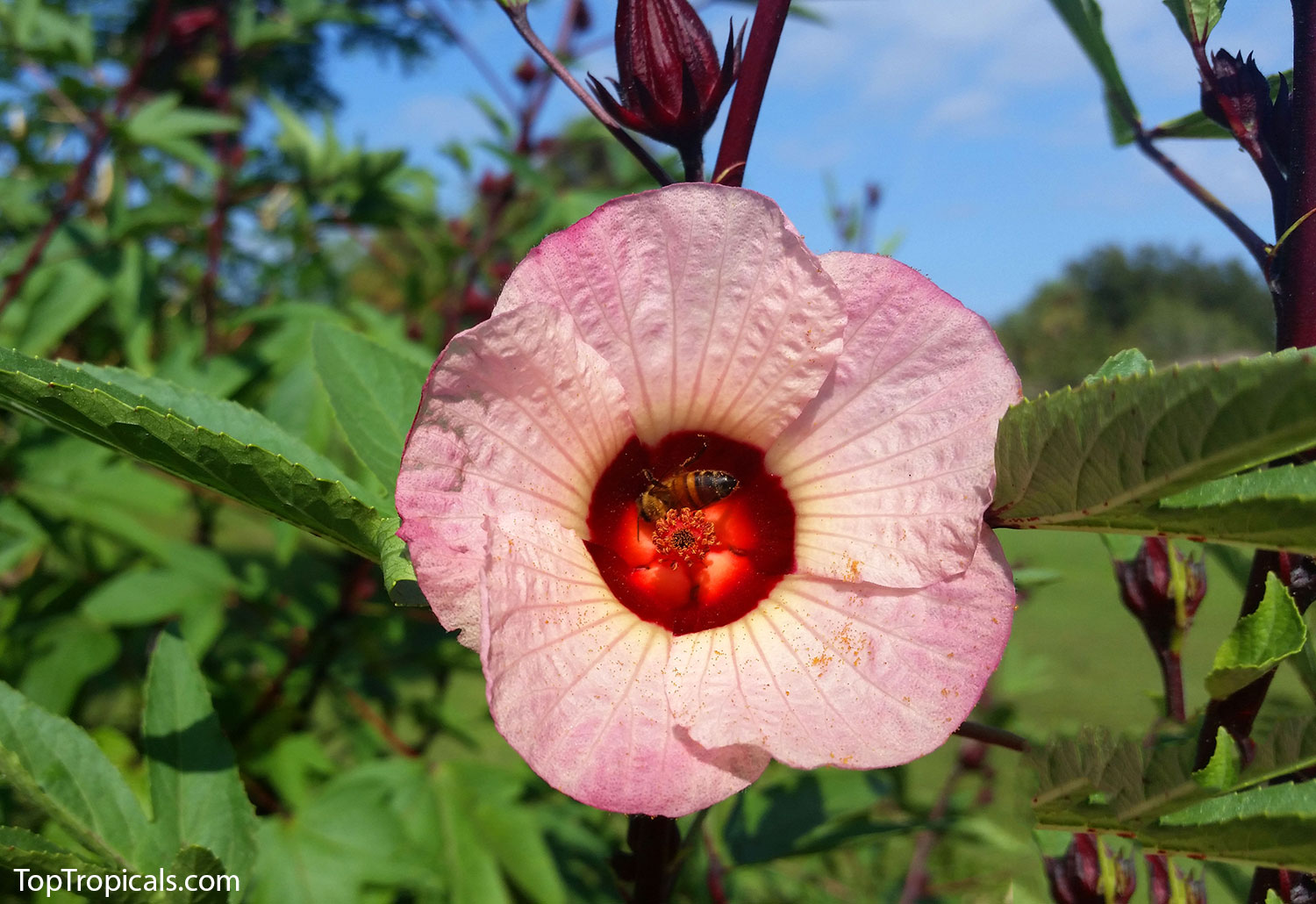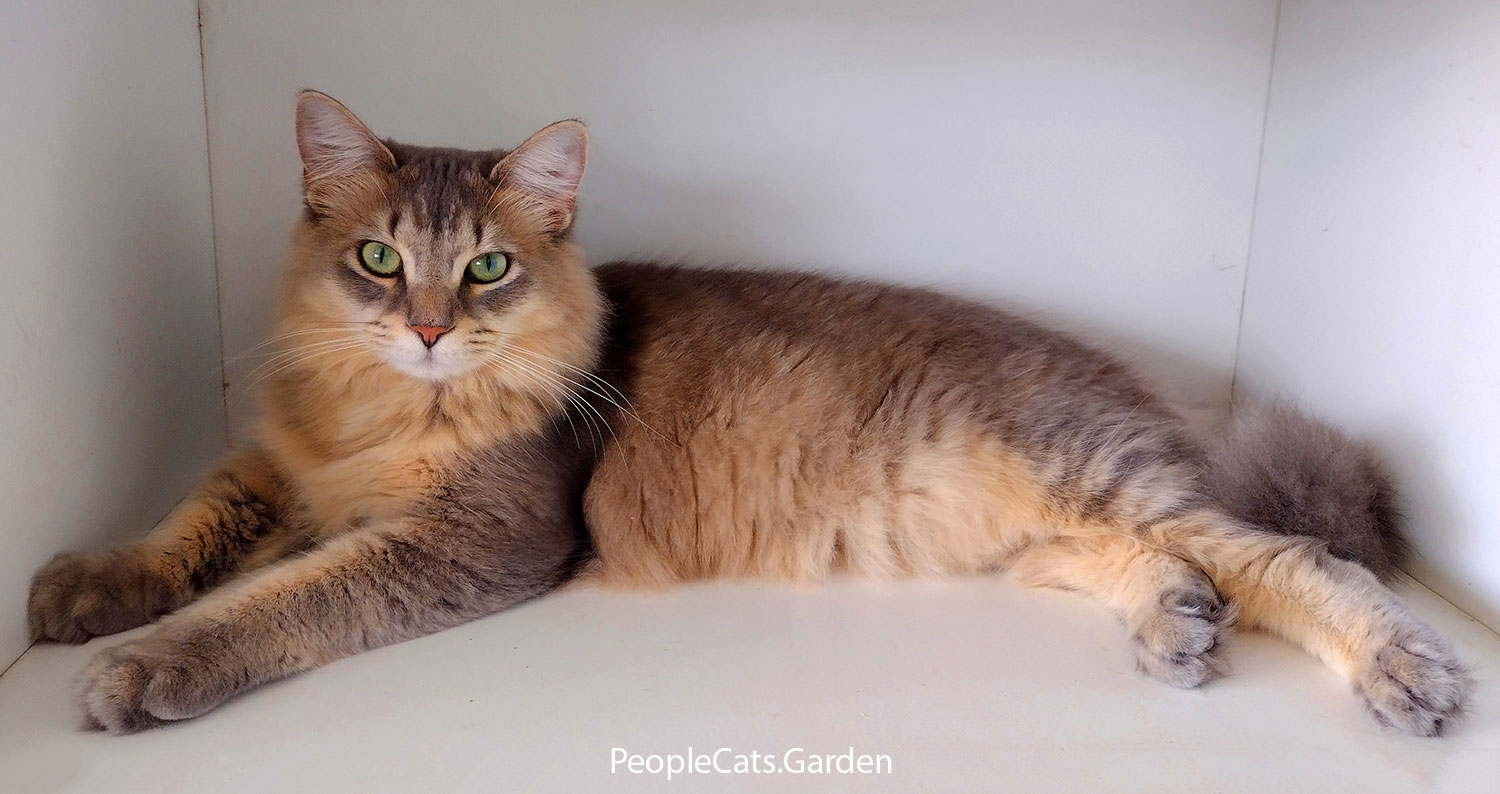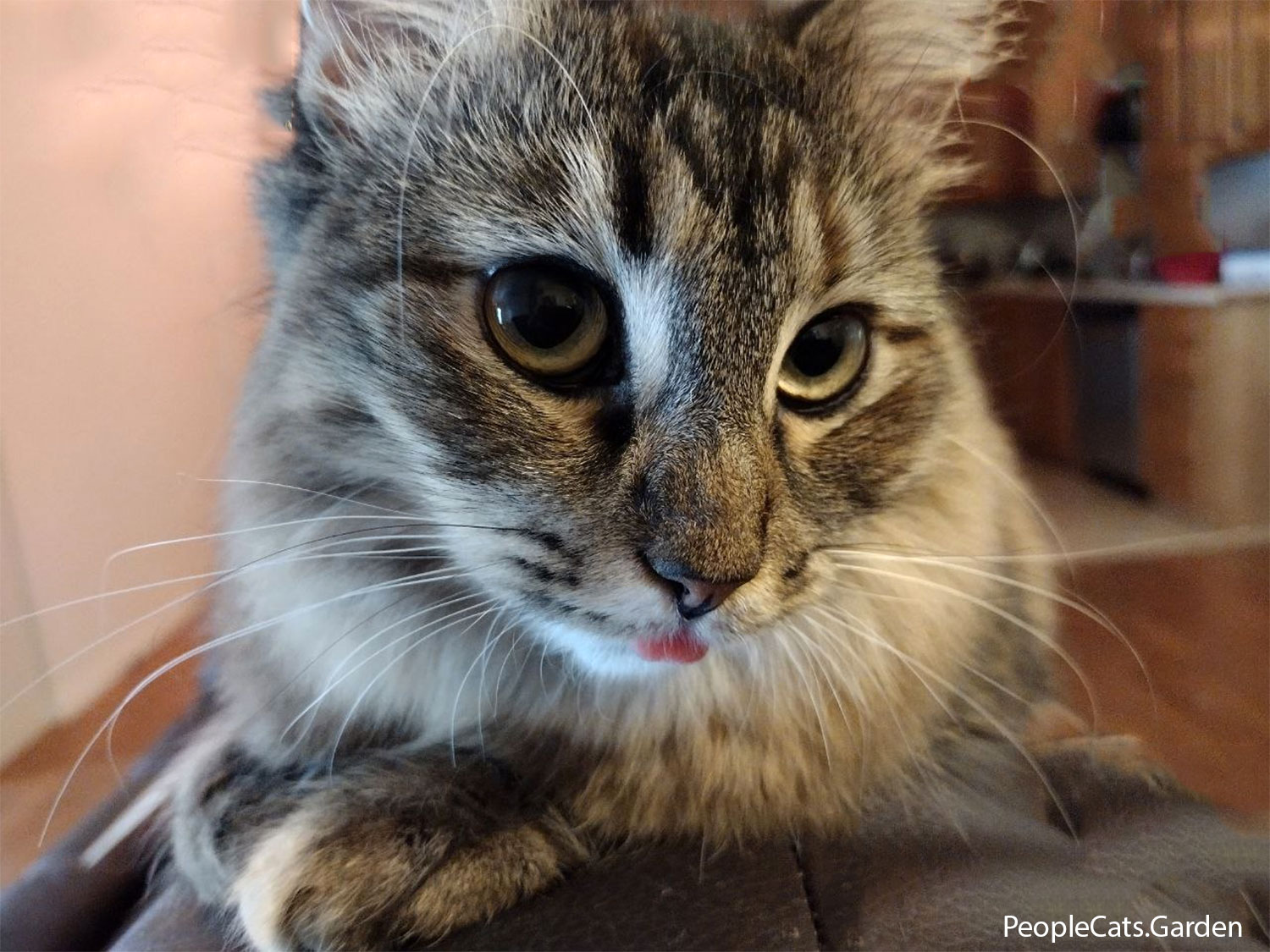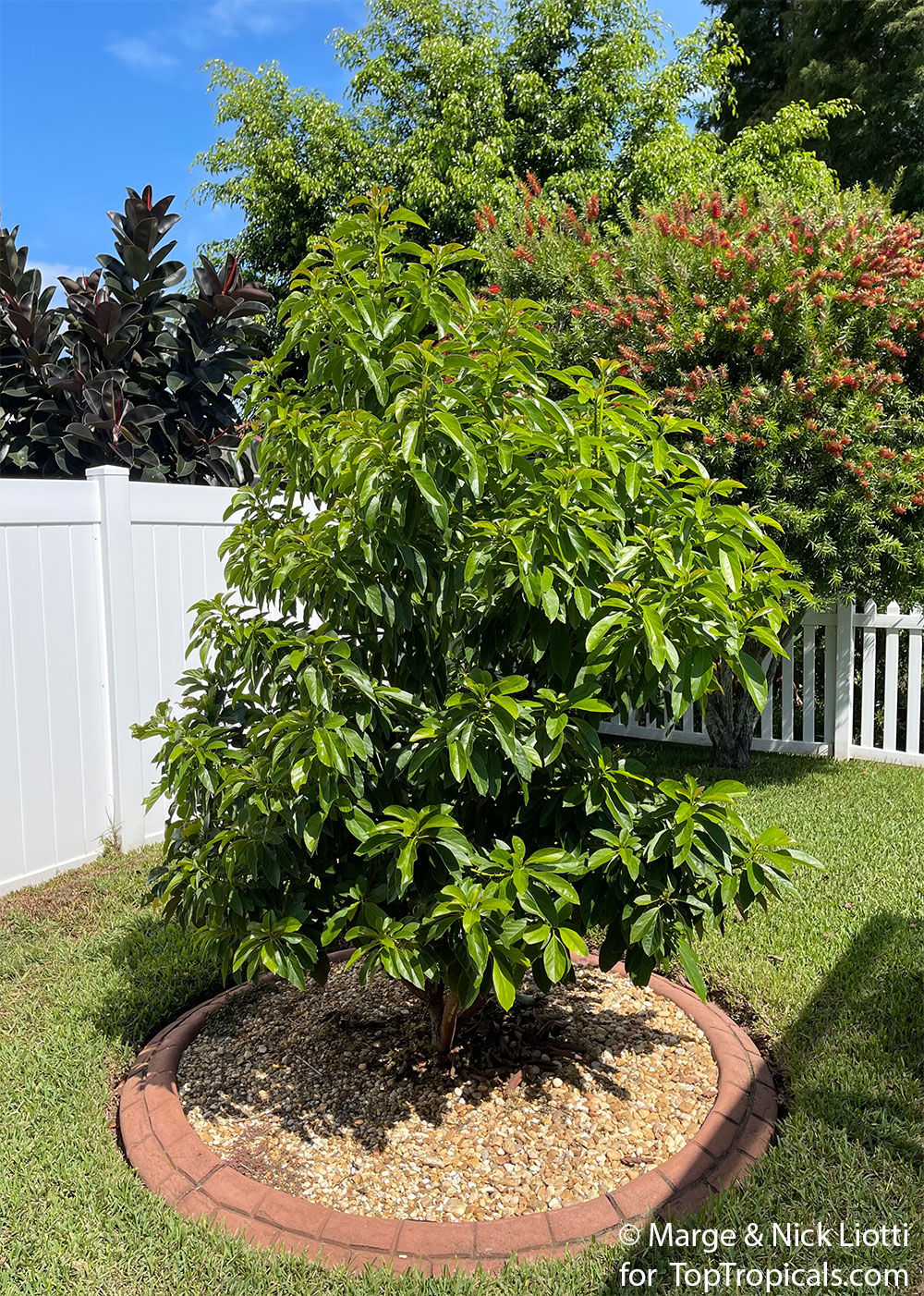Most useful Hibiscus plants
Grow your edible flower landscape in no time!
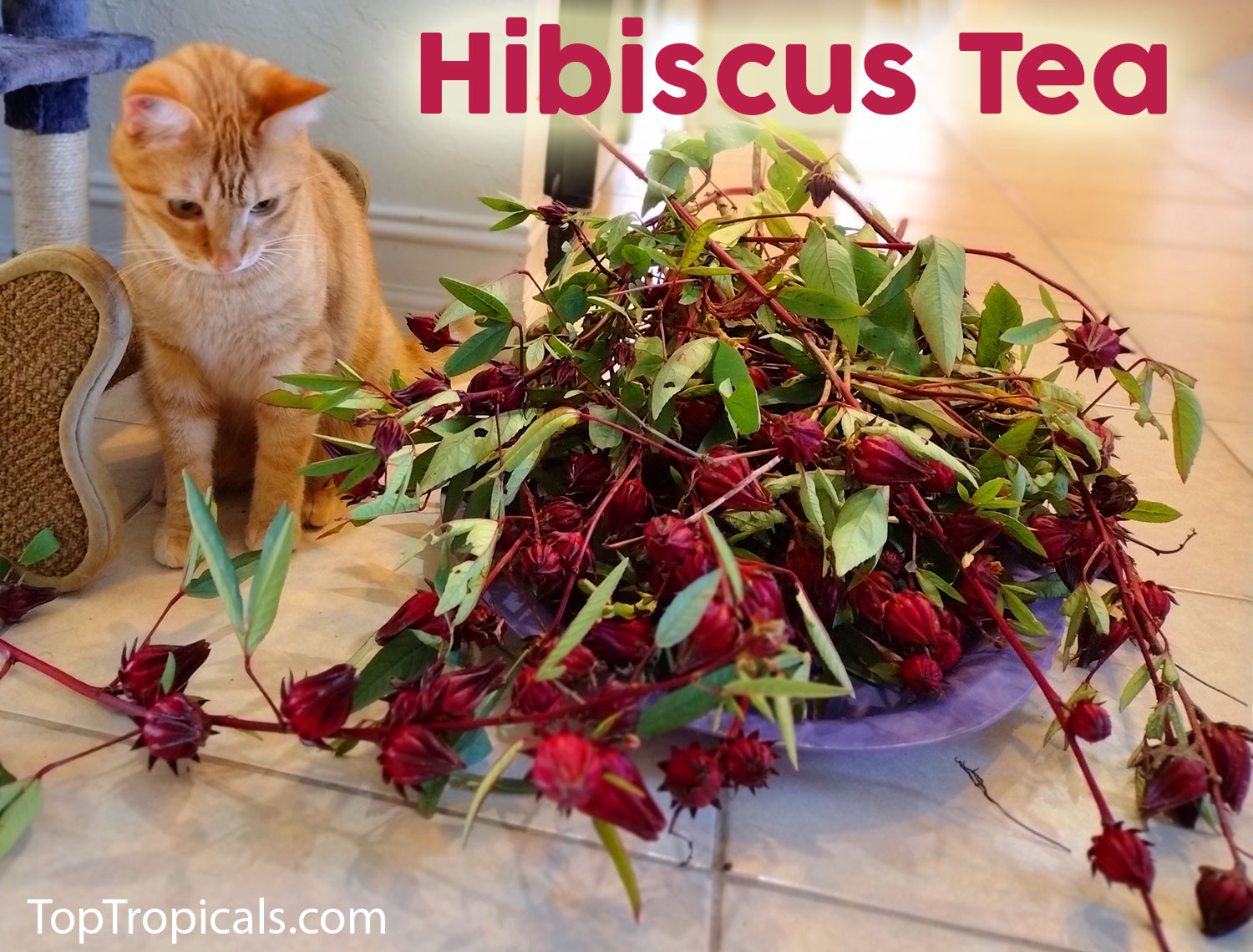
Who doesn't adore hibiscus flowers? We usually think of the fancy Hibiscus rosa-sinensis in all its colorful glory or the Exotic Garden
Hibiscus. But guess what? There's a whole bunch of other hibiscus species out there that are
not only drop-dead gorgeous but also surprisingly practical. They can jazz up your garden and your dinner plate! Today, we're
dishing out a sneak peek at a few of these charming hibiscus varieties. These beauties aren't just
a treat for your taste buds; they're also a gardener's dream. They practically grow themselves and are always wearing a smile!
Hibiscus sabdariffa - Flor de Jamaica, Karkade Sorrel
Hibiscus acetosella - African Cranberry Hibiscus
Hibiscus cannabinus (furcellatus) - Salad Hibiscus, Sleepy Hibiscus
Hibiscus mutabilis Cotton Candy - Mallow
Hibiscus
Hibiscus variegated Snow
Queen
Hibiscus schizopetalus - Coral
Hibiscus
Tea or Salad Hibiscus
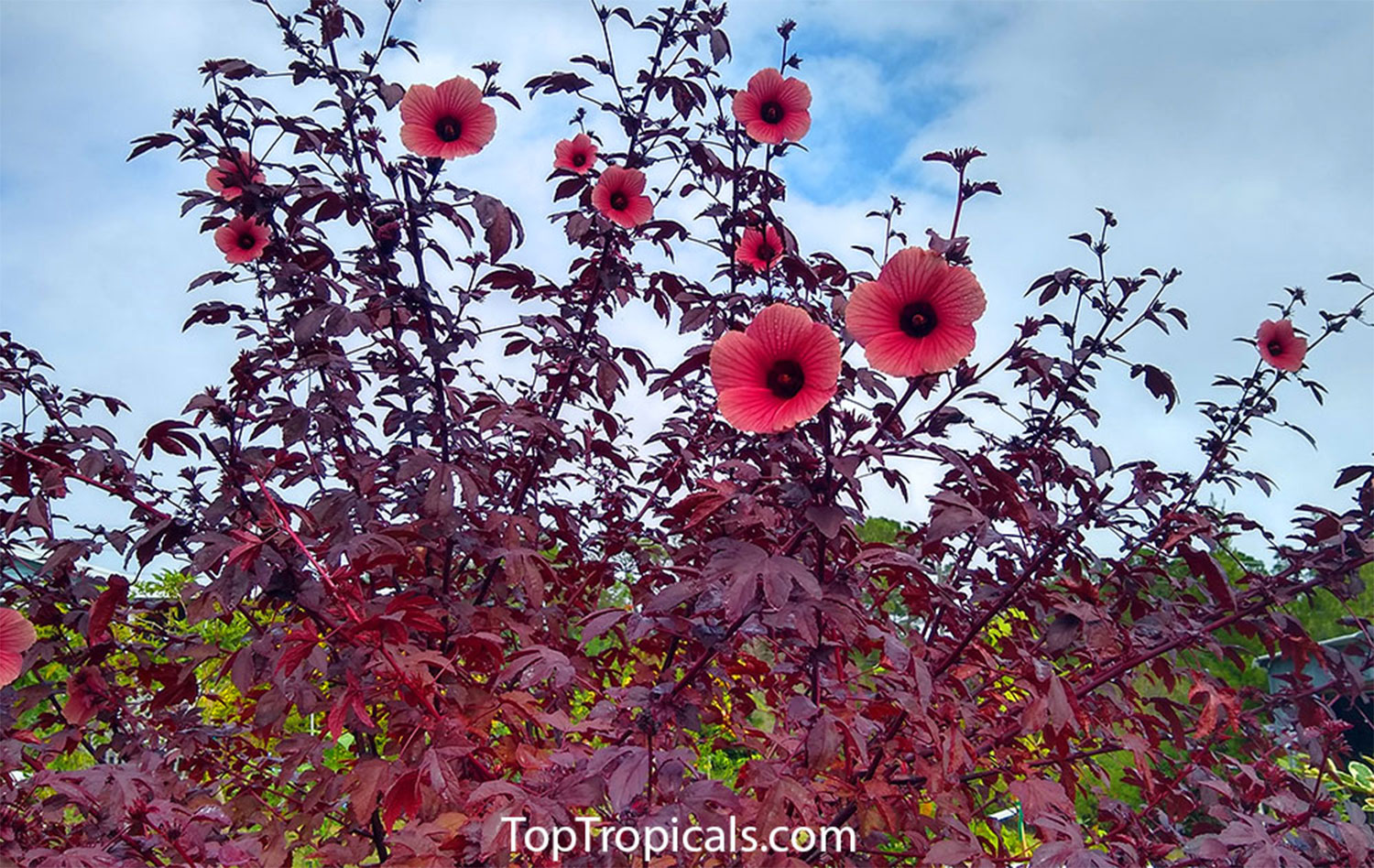
Hibiscus acetosella - African Cranberry Hibiscus. Leaves are acidic, rich of
vitamin C, good for salads and teas.
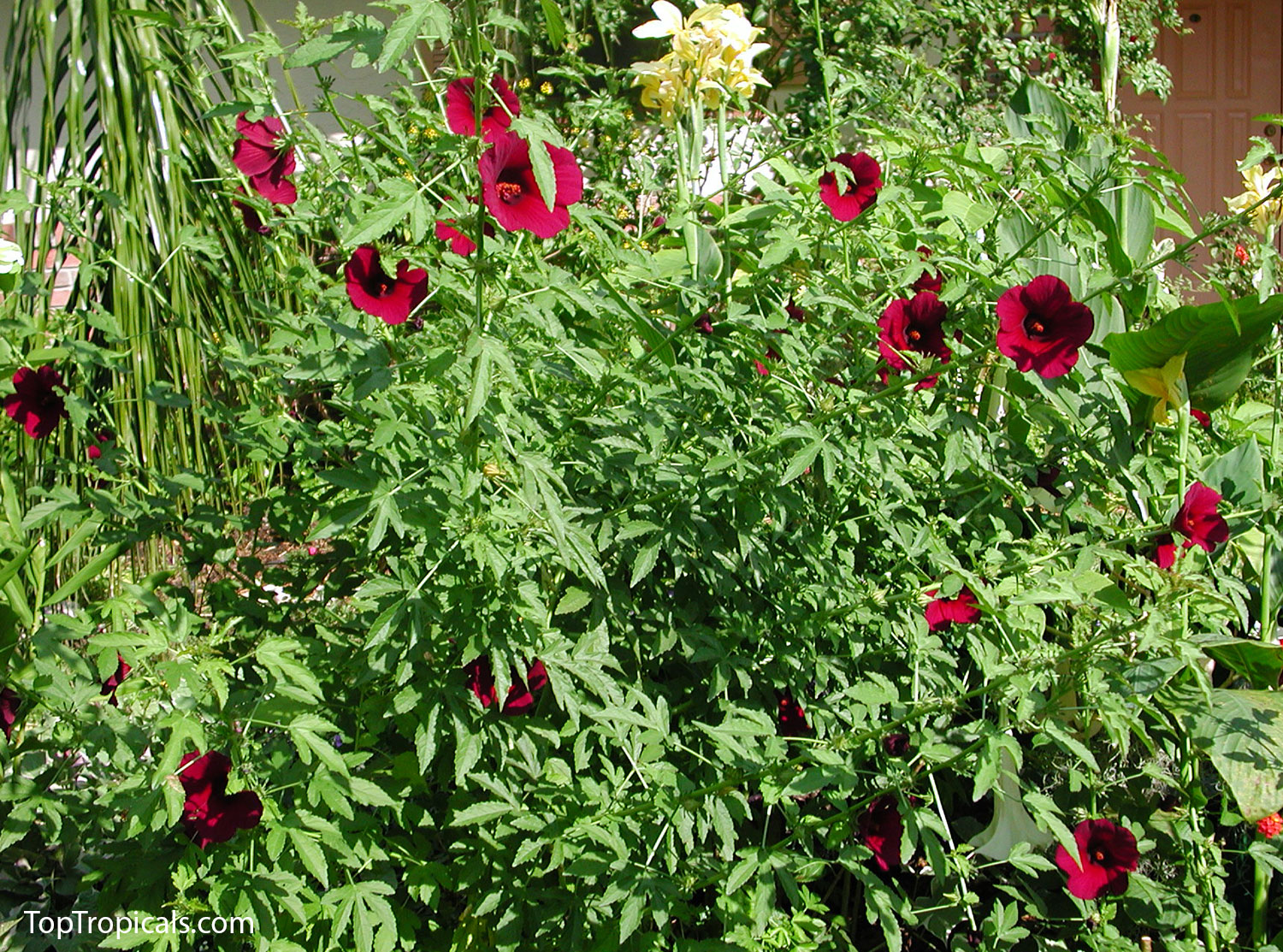
Hibiscus
cannabinus (furcellatus) - Salad Hibiscus, Sleepy Hibiscus. Vinous flowers
open in the morning, and by 3-4 pm they convolve into a curious fico-like knot.
Very similar to acetosella, only with green leaves, this edible hibiscus is
great for salads, rich of vitamin C. Seeds, flowers, and leaves are also used
for making delicious tea. Very fast growing, forms a large bush.
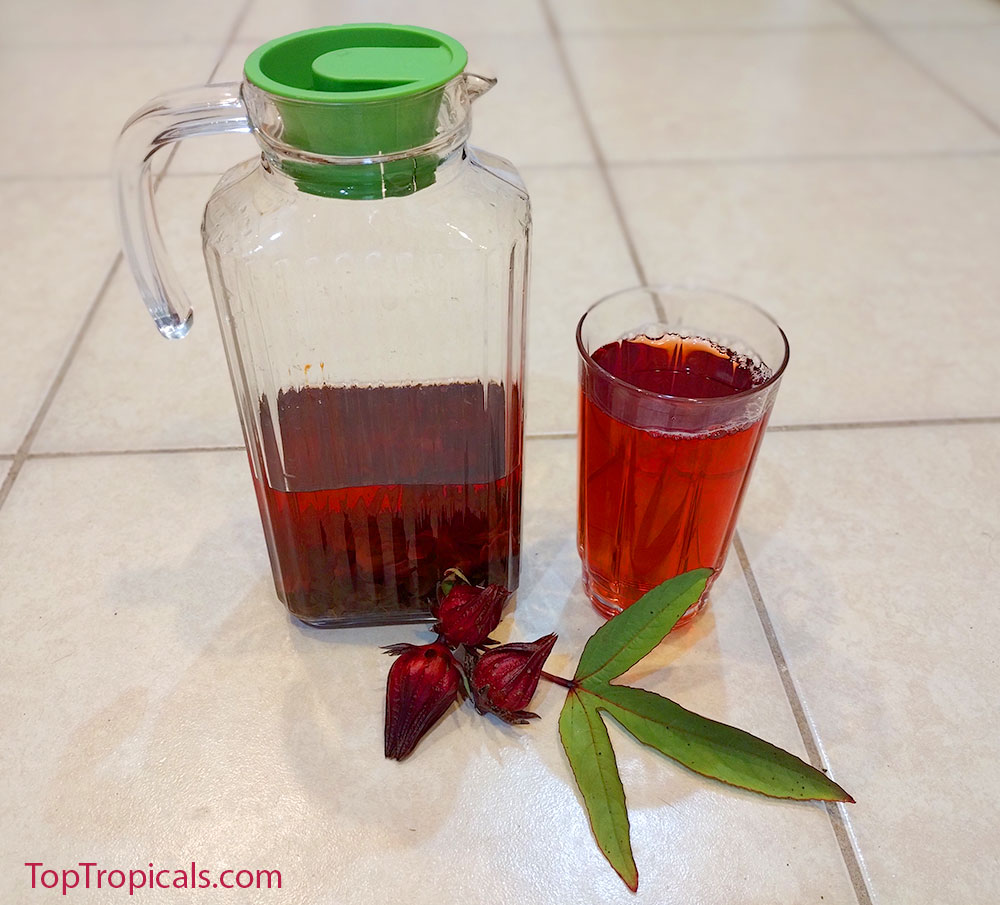
Hibiscus
sabdariffa - Flor de Jamaica, Karkade: the most delicious, fruity Jamaican
Hibiscus tea. It makes our favorite Summer drink!
Hibiscus with a smile
:)
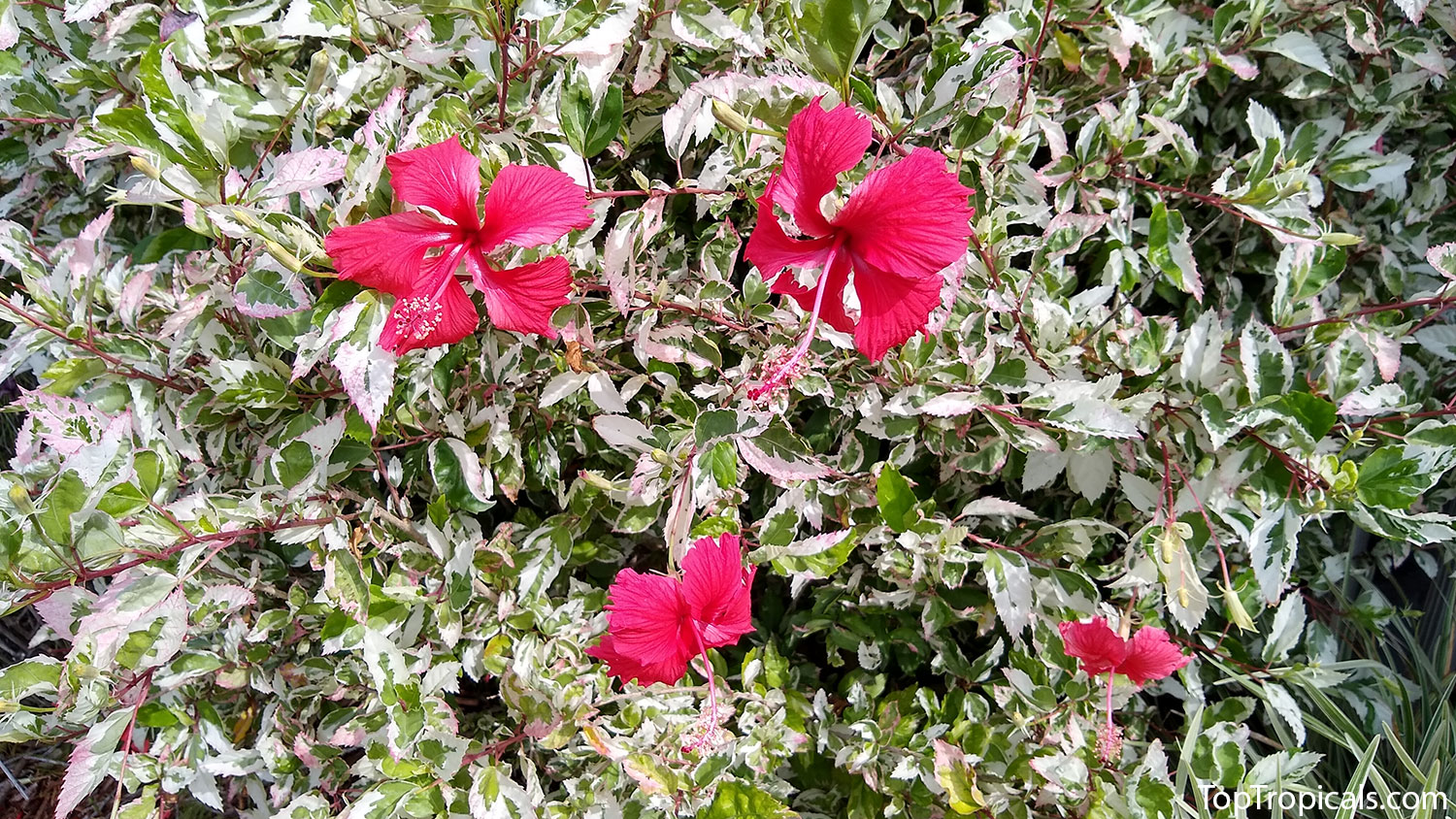
Hibiscus
variegated Snow Queen. Green foliage is dramatically splashed with bright
white which provides striking contrast to the large red flowers. A festival of
color!
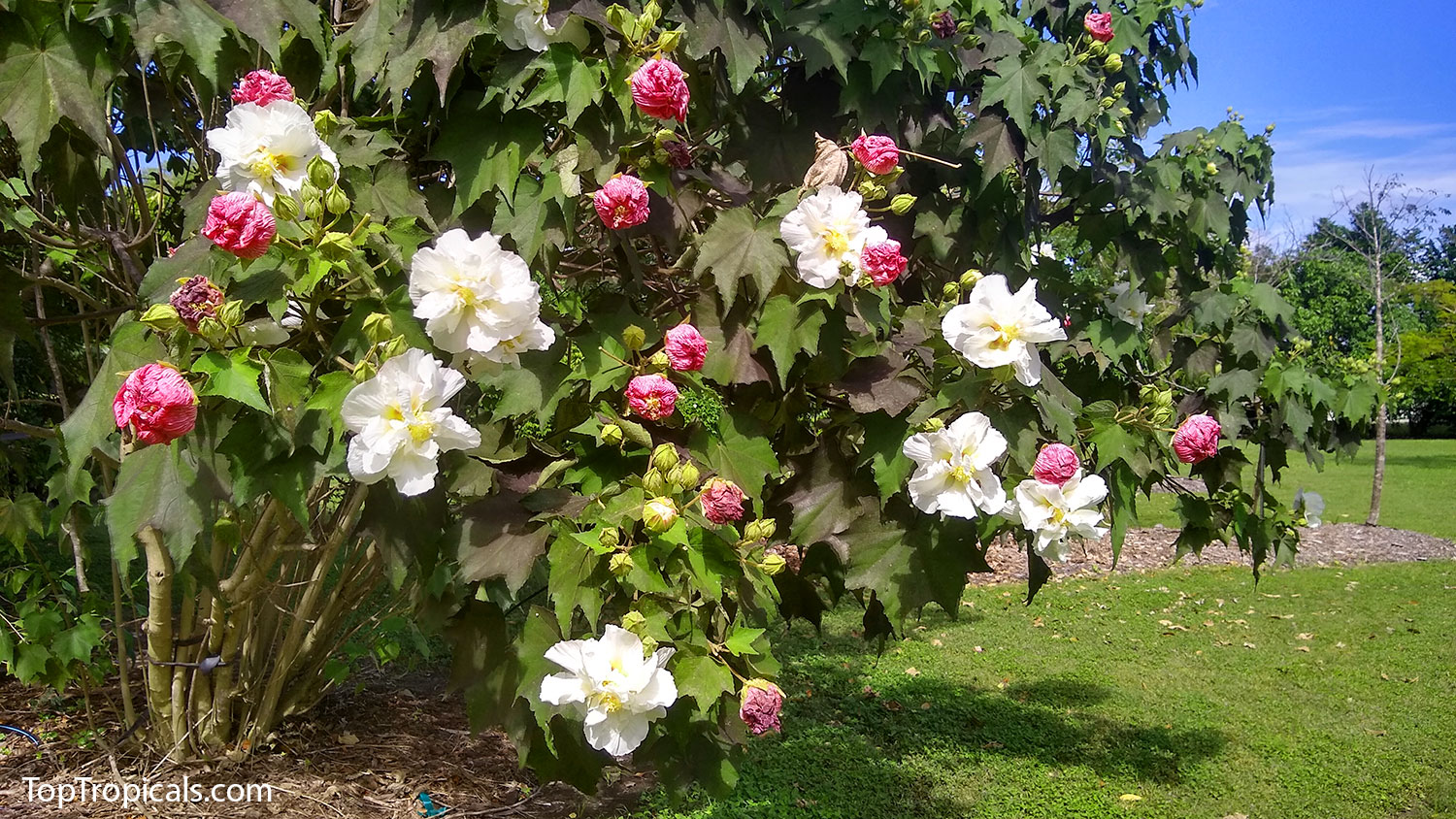
Hibiscus
mutabilis Cotton Candy - Mallow Hibiscus. Flowers open pure white and change
color over a three-day period until they are deep pink and then as they die
assume a dark "blue-pink" hue. The three distinct colors appear on the bush
simultaneously as the blooms color cycle independent of one another. Quite large
blossoms are up to 5 inches across!
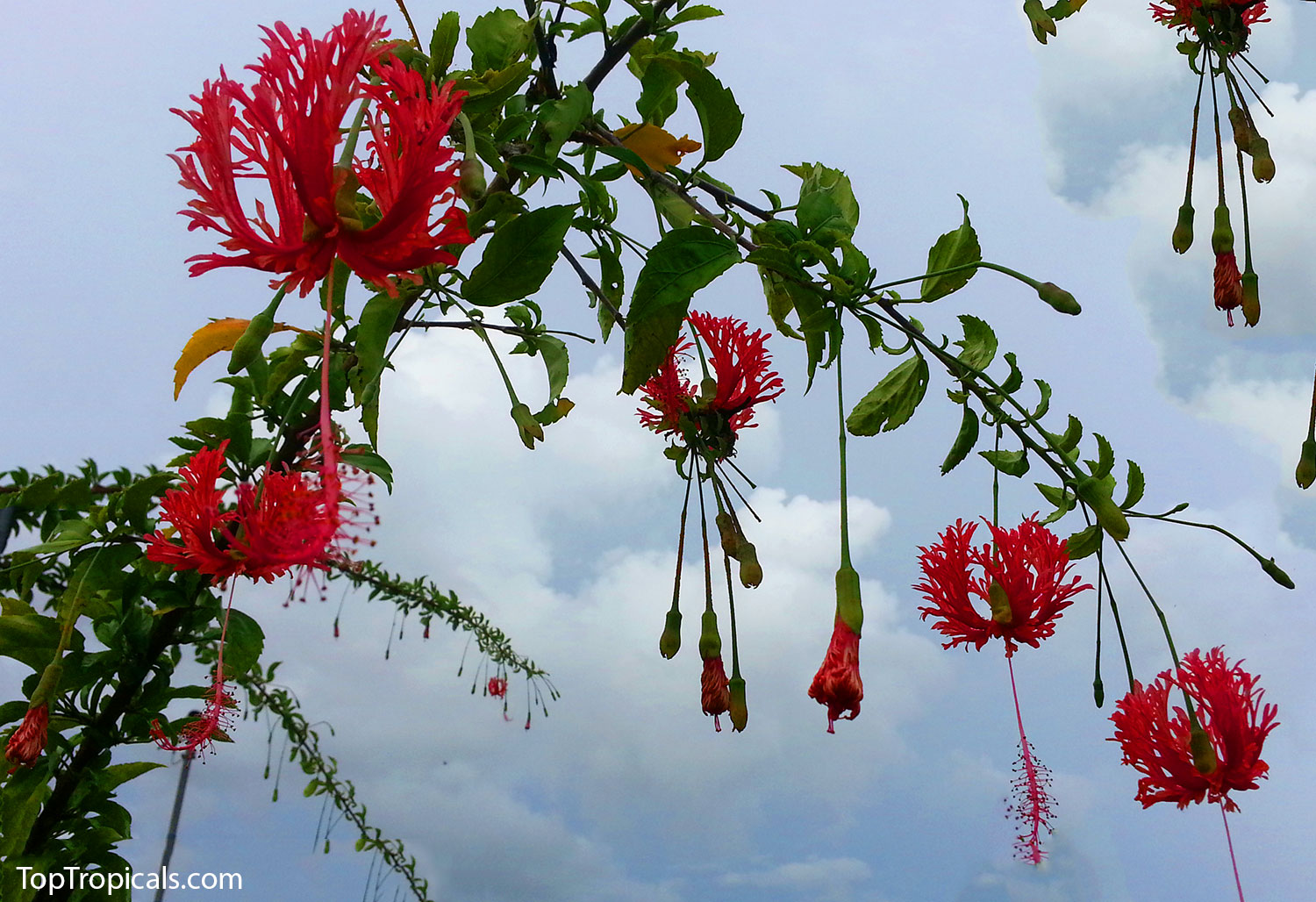
Hibiscus
schizopetalus - Coral Hibiscus. A weeping tree hibiscus, rare and hard to find
and every gardener wants it! Grows rapidly and blooms freely. Flowers look
like parachutes and can be recognized by the fringed and lacy petals which are
bent backward.
